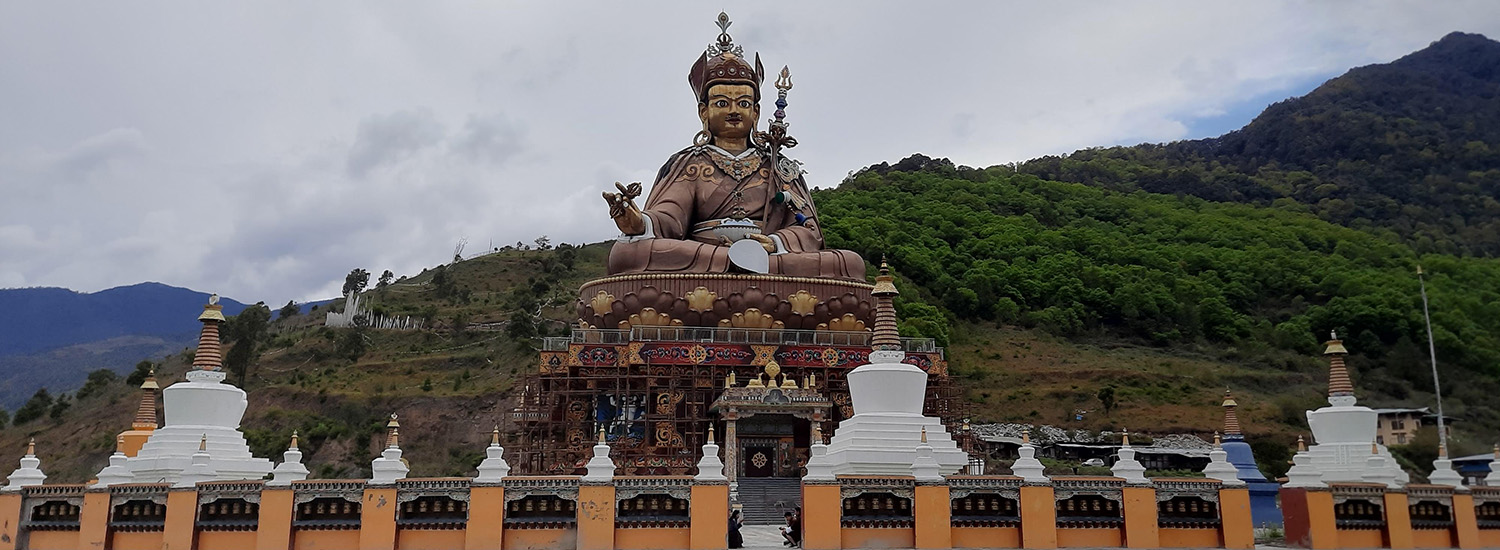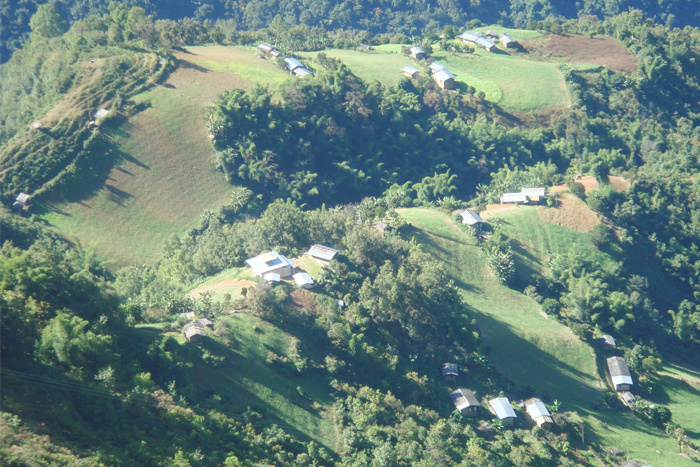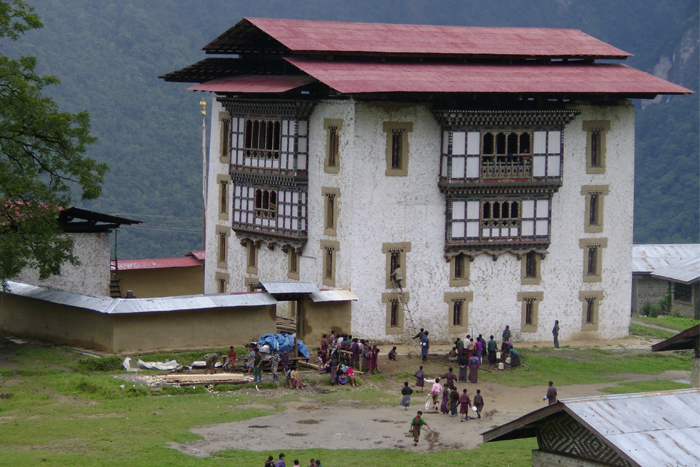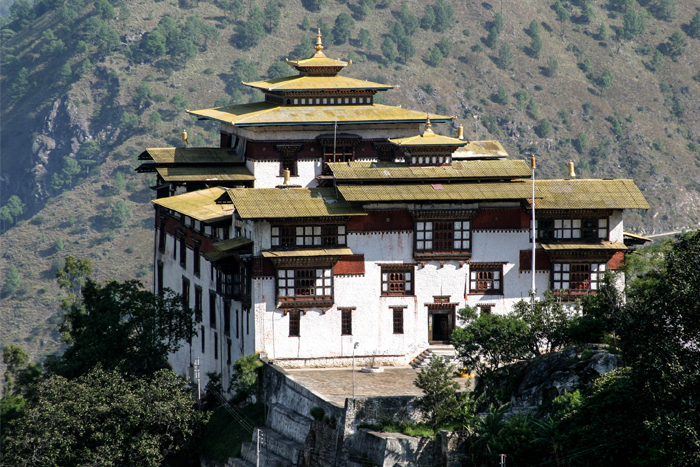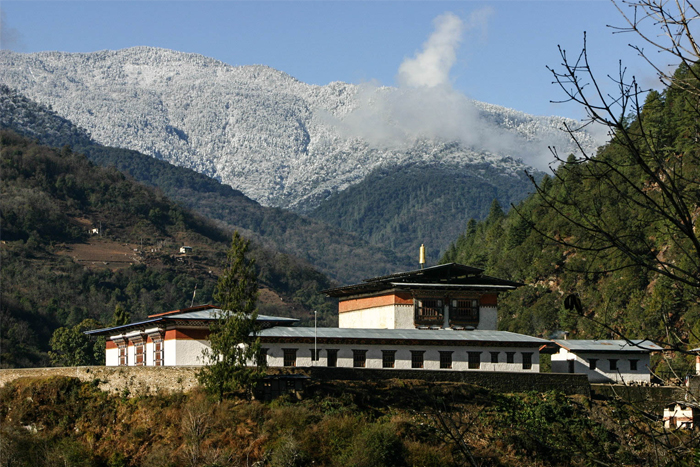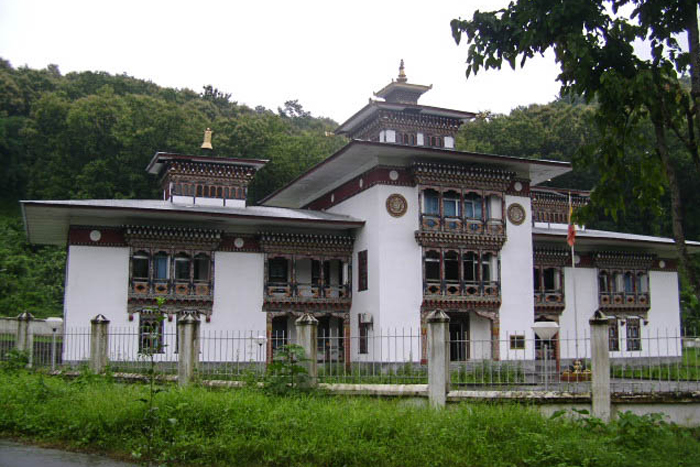Pemagatshel
The name Pemagatshel translates to “Lotus Garden of Happiness”. This 517.8 sq. km district is located in southeastern Bhutan and its altitude ranges from 1,000-3,500 m. Over half of the small Dzongkhag is under the cover of broadleaf and coniferous forests and most of the remainder is farmland.
The name Pemagatshel translates to “Lotus Garden of Happiness”. This 517.8 sq. km district is located in southeastern Bhutan and its altitude ranges from 1,000-3,500 m. Over half of the small Dzongkhag is under the cover of broadleaf and coniferous forests and most of the remainder is farmland.
Pemagatshel is famous for its artisans and weavers. The religious instruments like Jalings (oboe-like instruments) and Dhungs (long ritual trumpets) produced here are highly prized and sold throughout the country. The weavers of Pemagatshel produce fine Kiras (traditional dress worn by women) from Bura (raw silk). Two particularly gorgeous examples that are a specialty of the region are the Lungsermo and Aiekapur. The region is also famous for a locally made sweet known as Tsatsi Buram. It is made from the abundant sugarcane that grows in the district and is well-liked throughout the country.
The region has its own special tourist attractions. Situated upon a dagger-shaped mountain, Yongla Goemba is one of the oldest and holiest shrines in Eastern Bhutan. One of the more interesting historical facts about the temple is that during the Duar War the Trongsa Poenlop (Feudal Lord) Jigme Namgyel, father of the First King Ugyen Wangchuck, used it as a base of operations in order to launch raids upon the British troops. There are various other shrines and temples in the region including the 15h century temple Kheri Goemba and the Lektiri Goemba in Goemba Singma village.
The district is known for its numerous festivals and folk songs. The most notable folk song is the Ausa, a song that is sung during the departure of family members, friends and relatives. Since the construction of the dzong in the early 1980’s, they have also celebrated the annual Tshechu over a three day period. The main crop grown in the region is maize but potatoes, oranges, bananas and other fruits are also cultivated. ‘Slash and Burn Agriculture’ (Tseri) was once the dominant agricultural practice in the district but nowadays most farmers have orchards and sell much of their crop.
Related Tour
-
Mongar
The road approaching Mongar is one of...
-
Lhuentse
In the northeastern corner of Bhutan lies...
-
Trashigang
Trashigang, "The Jewel of the East", spans...
-
Trashiyangtse
One of the newest dzongkhags in the...
-
Samdrup Jongkhar
Samdrup Jongkhar town holds the distinct honour...

